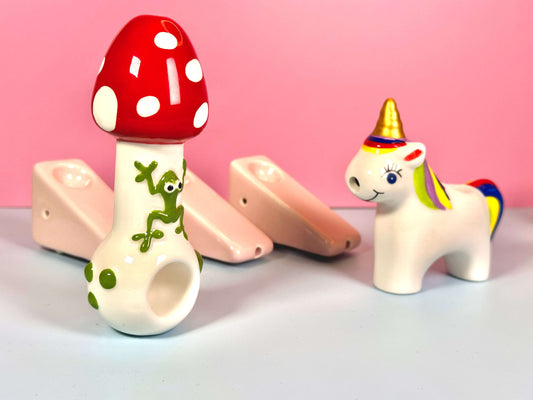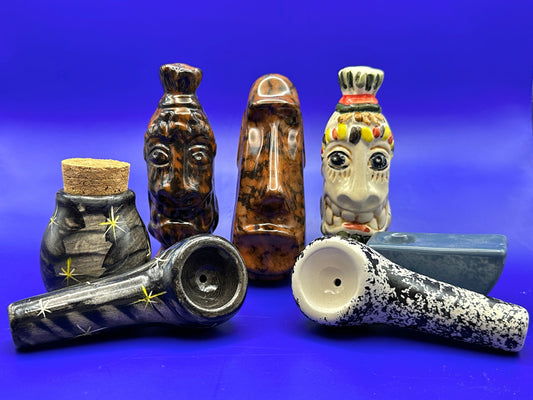Smoking cannabis has been a practice dating back centuries, and the tools used for this purpose have evolved over time. One popular choice among enthusiasts is the ceramic weed pipe. These pipes offer a unique smoking experience and have gained popularity due to their functionality, durability, and aesthetic appeal. This article delves into the science behind ceramic weed pipes, exploring their construction, working principles, and the impact they have on the smoking experience.
-
Construction and Materials. Ceramic weed pipes are typically handcrafted from heat-resistant clay, making them durable and capable of withstanding high temperatures. The clay is mixed with other materials, such as grog or quartz, to enhance the pipe's strength and prevent it from cracking. The mixture is shaped into a pipe form and then fired at high temperatures to solidify the structure.
-
Bowl Design and Airflow. The most crucial part of a ceramic weed pipe is its bowl, where the cannabis is placed for smoking. The bowl is strategically designed to optimize airflow and combustion. It typically has a concave shape with a small hole, called the carb or choke, on the side. The carb allows the user to control the airflow while inhaling.
When lighting the cannabis, the user covers the carb and applies heat to the herb in the bowl. As the herb combusts, smoke is produced and drawn into the pipe. By releasing the carb and inhaling, fresh air enters through the carb and mixes with the smoke, creating a smoother, cooler hit.
- Heat Dispersion and. Ceramic, as a material, has excellent heat retention properties. This characteristic plays a vital role in the smoking experience. When the cannabis is lit in the bowl, the ceramic material absorbs and disperses the heat evenly, preventing localized hotspots that could lead to harsh, unpleasant hits. The heat dispersion also helps to cool down the smoke before it reaches the user's lips.
Additionally, some ceramic pipes are designed with extended stems, allowing for further cooling of the smoke. As the smoke travels through the longer pathway, it has more time to lose heat, resulting in a milder and smoother inhale.
- Filtration and Residue. Ceramic weed pipes offer a degree of filtration through the porous nature of the material. As the smoke passes through the ceramic, some impurities, such as ash and resin, can be trapped, resulting in a cleaner smoking experience. However, it's important to note that ceramic pipes do not filter out all harmful substances found in smoke, so responsible consumption is still advised.
Over time, resin can accumulate on the inner surface of the pipe. This residue, known as "resin buildup," can affect the pipe's airflow and the overall smoking experience. Regular cleaning is necessary to maintain optimal functionality and prevent the buildup from becoming excessive.
Ceramic weed pipes combine functionality and aesthetics to provide an enjoyable smoking experience for cannabis enthusiasts. The combination of heat dispersion, airflow control, and the filtration properties of ceramic contributes to a smoother and cooler hit. The craftsmanship involved in creating these pipes ensures durability and resistance to high temperatures.
As with any smoking device, responsible use and maintenance are crucial. Regular cleaning and proper handling of the ceramic weed pipe will help maintain its effectiveness and longevity. Whether for recreational or medicinal purposes, understanding the science behind these pipes enhances the appreciation of the artistry and engineering involved in their creation, providing a satisfying experience for cannabis users around the world.








